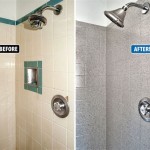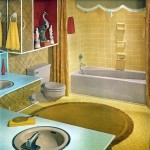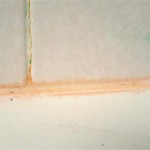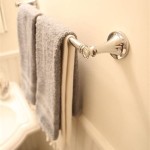Slim Bathroom Sink and Cabinet: Maximizing Space in Compact Bathrooms
In contemporary home design, the optimization of space, particularly in bathrooms, is a paramount concern. The increasing prevalence of smaller apartments and condos has necessitated innovative solutions for maximizing functionality without sacrificing aesthetics. A slim bathroom sink and cabinet combination presents a compelling answer to this challenge, providing a stylish and practical means of incorporating essential bathroom fixtures into limited spaces. This article will delve into the benefits, considerations, and various aspects of selecting and installing a slim bathroom sink and cabinet, offering a comprehensive overview for homeowners and designers alike.
The slim bathroom sink and cabinet is characterized by its reduced depth and width, making it ideally suited for powder rooms, guest bathrooms, and en-suite configurations within master bedrooms where space is at a premium. While traditional bathroom vanities can often dominate a room, a slim model allows for greater freedom of movement and the incorporation of other design elements without feeling cramped. Beyond the purely spatial advantages, these fixtures offer a range of aesthetic possibilities, allowing for personalization and integration with diverse bathroom styles.
Space-Saving Design and Functionality
The primary advantage of a slim bathroom sink and cabinet lies in its space-saving design. Standard bathroom vanities typically project outwards from the wall by 20 to 24 inches. A slim model, however, can reduce this projection to as little as 12 to 16 inches, effectively freeing up valuable floor space. This seemingly minor reduction can significantly impact the usability of a small bathroom, creating a more comfortable and accessible environment. The reduced depth also makes navigating around the sink area easier, preventing accidental bumps and collisions.
Furthermore, the functionality of a slim bathroom sink and cabinet is not compromised by its reduced dimensions. Many models incorporate clever storage solutions, such as shallow drawers, open shelving, or concealed compartments, to accommodate essential toiletries and bathroom supplies. These storage options help to declutter the countertop, maintaining a clean and organized appearance. The integration of the sink and cabinet also provides a cohesive and streamlined look, enhancing the overall aesthetic appeal of the bathroom.
Wall-mounted slim bathroom sink and cabinet options further amplify the space-saving benefits. By suspending the unit off the floor, they create an illusion of greater spaciousness and facilitate easier cleaning underneath. This design choice is particularly beneficial in bathrooms with limited square footage, as it maximizes the visible floor area and reduces visual clutter.
Consideration should be given to the drain placement when selecting a slim bathroom sink and cabinet. Offset drains are often used in these designs to optimize the usable space within the sink basin. This allows for greater water capacity and minimizes the risk of splashing, even with a smaller sink.
Material Considerations for Durability and Style
The choice of materials for a slim bathroom sink and cabinet is critical to both its durability and aesthetic appeal. The sink itself can be constructed from a variety of materials, each offering distinct characteristics and advantages. Common options include:
- Ceramic: A classic choice known for its durability, stain resistance, and ease of cleaning. Ceramic sinks are available in a wide range of shapes and sizes, making them a versatile option for various bathroom styles.
- Porcelain: Similar to ceramic, but fired at a higher temperature, resulting in a denser and more durable material. Porcelain sinks are highly resistant to chips and scratches and offer a glossy, elegant appearance.
- Glass: A contemporary option that can add a touch of sophistication to a bathroom. Glass sinks are typically made from tempered glass, which is highly resistant to shattering. They require careful cleaning to maintain their clarity and shine.
- Stone: Materials like granite, marble, and travertine offer a luxurious and natural look. Stone sinks are durable and add a unique visual texture to the bathroom. However, they may require more maintenance than other materials.
- Stainless Steel: A durable and hygienic option that is easy to clean. Stainless steel sinks are often used in modern and minimalist bathrooms.
The cabinet component, which houses the sink and provides storage, can also be constructed from various materials. Common options include:
- Wood: Offers a warm and natural look. Different types of wood, such as oak, maple, and walnut, provide varying degrees of durability and aesthetic appeal.
- Plywood: A cost-effective and durable option that is often used as a base material for cabinets. Plywood is typically covered with a veneer to provide a more aesthetically pleasing finish.
- MDF (Medium-Density Fiberboard): A manufactured wood product that is smooth and easy to paint. MDF is a cost-effective option but may not be as durable as solid wood or plywood.
- Metal: Offers a sleek and modern look. Metal cabinets are durable and rust-resistant, making them a good option for humid bathroom environments.
- PVC/Plastic: Water resistant and easy to clean, making it suitable for bathrooms. PVC and plastic cabinets are typically a more budget-friendly option.
When selecting materials, it is essential to consider the overall style of the bathroom and the desired level of durability and maintenance. For example, a modern bathroom might benefit from a glass sink paired with a metal cabinet, while a more traditional bathroom might feature a ceramic sink with a wood cabinet.
Installation Considerations and Plumbing Requirements
The installation of a slim bathroom sink and cabinet requires careful planning and execution to ensure proper functionality and prevent potential plumbing issues. Before commencing the installation, it is crucial to verify the existing plumbing configuration and ensure that it is compatible with the new fixture. This includes checking the location of the water supply lines and the drainpipe.
In many cases, the existing plumbing may need to be modified to accommodate the slim cabinet's dimensions and sink placement. This may involve extending or relocating water supply lines or adjusting the drainpipe. It is highly recommended to consult with a qualified plumber to perform these modifications, ensuring that they are done correctly and in compliance with local plumbing codes.
When installing a wall-mounted slim bathroom sink and cabinet, it is essential to ensure that the wall is structurally sound and capable of supporting the weight of the fixture. This may involve reinforcing the wall studs or using specialized mounting brackets designed for heavy loads. Incorrect mounting can lead to the fixture becoming unstable or even detaching from the wall, posing a safety hazard.
The installation process typically involves the following steps:
- Preparation: Shut off the water supply to the existing sink and disconnect the drainpipe. Remove the old sink and cabinet, taking care not to damage the surrounding walls or flooring.
- Plumbing Modifications: Modify the water supply lines and drainpipe as needed to accommodate the new slim sink and cabinet.
- Cabinet Installation: Install the cabinet according to the manufacturer's instructions. For wall-mounted units, ensure that the mounting brackets are securely attached to the wall studs.
- Sink Installation: Install the sink into the cabinet, ensuring that it is properly sealed to prevent leaks.
- Plumbing Connections: Connect the water supply lines and drainpipe to the sink. Ensure that all connections are tight and leak-free.
- Testing: Turn on the water supply and test the sink for leaks. Check the drain to ensure that it is draining properly.
While some homeowners may be comfortable performing the installation themselves, it is generally recommended to hire a professional plumber to ensure that the job is done correctly and safely. A professional plumber will have the necessary skills and experience to handle any potential plumbing issues and ensure that the installation complies with all local codes and regulations.
Proper sealing around the sink and cabinet is crucial to prevent water damage and mold growth. Use a high-quality silicone sealant to seal the edges of the sink and cabinet where they meet the countertop or wall. This will create a watertight barrier that protects the surrounding surfaces from moisture.
Slim bathroom sinks and cabinets present an effective and elegant solution for maximizing space in compact bathrooms. By carefully considering the design, materials, and installation requirements, homeowners can create a functional and stylish bathroom environment that meets their needs without sacrificing valuable space. This carefully chosen combination can transform a cramped space into a haven of efficiency and beauty.

Solid Oak Bathroom Cabinet Small Vanity Units Mirror Sink 300cbc351 De

Nameeks Derin139 By Nameek S Derin Floating Small Bathroom Vanity Modern 24 Travertine Style Sink Thebath

Maximize Space With Sink Cabinet For Small Bathrooms

Magic Home 20 In X 16 34 Freestanding Small Bathroom Vanity Cabinet Green With White Caremic Sink Top Storage Rack Cs Wf283482aad The Depot

Nameeks Mini5 By Nameek S Mini Small Bathroom Vanity Floating Modern 24 Thebath

450mm Vanity Unit White Victorian Plumbing

20 Inch Vanity With Sink Wenore Home 18 Small Bathroom Modern Under Cabinet

The Best 20 Small Bathroom Vanities Of 2024

24 Inch Brown Classic Style Powder Room Debellis Small Bathroom Vanity

Magic Home 20 In X 15 30 Bathroom Vanity White Storage Cabinet With Ceramic Top Sink 2 Tier Shelf Sl Lusx3019a264 The Depot
Related Posts







